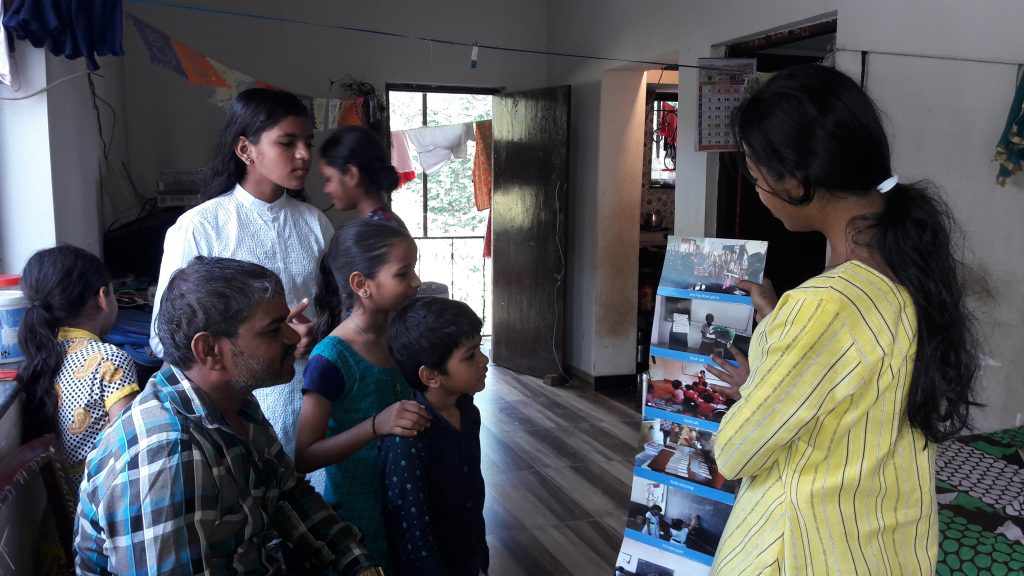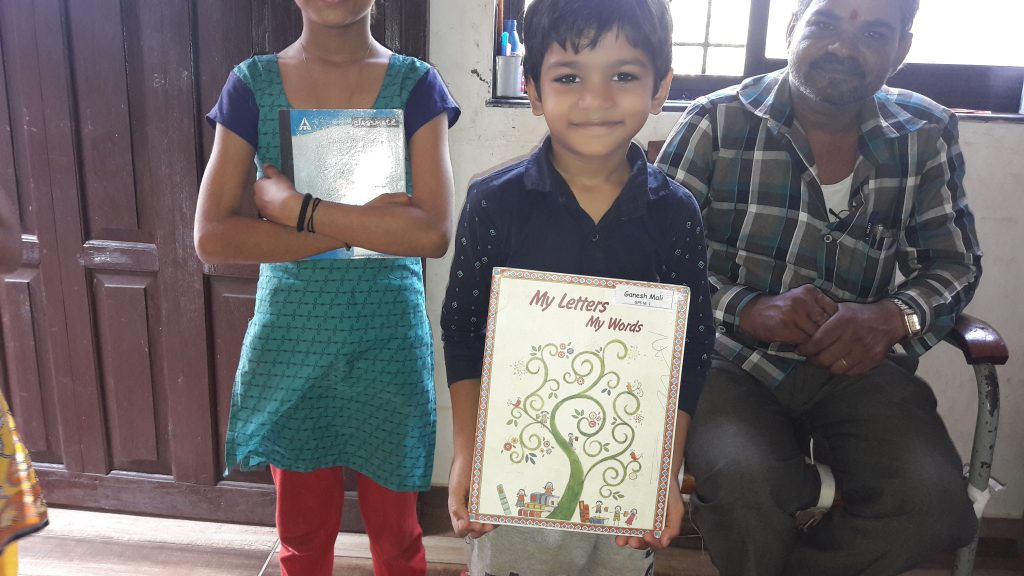Back story
As children, we never had our teachers coming home, for any reason, be it our progress reports or our syllabus reports or even just a cordial interaction with our parents. The concept of home visits was fairly new to us when we realised we need to do them as a community building experience as part of Bookworm. We have interacted (but not met) with parents in our partner schools as a part of the school organised Parent Teacher Association ( PTA) meets. But these gatherings are large and we feel they have not enabled us to get to know any parent group or for them to know us.
Inorder to do home visits well, we decided to read more about them. We referred to papers like, (Farmer, 2015) Knock Knock, Teacher’s Here: The Power Of Home Visits, (Ernst-Slavit, Mason) Making Your First ELL Home Visit: A Guide for Classroom Teachers, Home Visit Protocol and (2017) Home Visits. By reading these and from our own understanding, we realised that we need to visit children’s homes;
- To bring the teacher to the community
- To understand the child in the home environment – ( in relationship to school)
- To demonstrate that we are sufficiently interested to visit the home of the child.
- To begin to establish a relationship with parents
- To understand the socio economic background of the community with respect to access to story and story books.
- To not just have empathy but to sympathise.
Since we only interact with the children once a week during sessions, it was necessary to understand the child in behavioural terms at home as well, in order to be able to help further. Home visits would help us to get to know the child better. It would help us to know if they are happy at home. Are their parents supportive, or does the child have the same behaviour at home as in school. This was the opportunity for us to get a better understanding by looking into the child’s world.
We then decided which schools and children we should visit. Even while we were planning, execution did not come easy. We faced a lot of challenges which we had to overcome. Selecting schools, as initially we thought we would do all schools, but realised time constraints, distance and access would be an issue. Keeping these points in mind, we chose the Government Primary Schools, because we felt we should get to know the children’s backgrounds, their family lives, their home language as they are a migrant population. And even though we chose certain children, we didn’t always get a response, or some places did not respond positively. Then there was the issue of timings of parents availability, so in such cases, we had to be flexible, working beyond our work hours to reach them. Sometimes the contact numbers we had were wrong so we had to choose a new set of children which fit in our selection criteria. But finally when all this was done and our issues sorted, we began the home visits. Each home visit we conducted was unique in its own way but there was one visit which will stay with us forever
The visit
On this particular day, as we prepped for the home visit, we had reservations on how it would be, as it had been scheduled and cancelled multiple times. Just to be sure, we called the child’s father saying we were coming. When we reached, it was a huge surprise to see many familiar faces from school. They were all curious to know the reason for our visit, asking, “Teacher yahaan aap kyun aayi ho?”. They all wanted to interact with us, know about our programme and their child’s progress. The entire community stood as a family, ready to welcome us. Everywhere we looked, a sea of people greeted us. We personally felt like stars, in that moment. Their response reflected their enthusiasm in receiving someone from their child’s school at their home. The warmth and love made us feel comfortable. It was a wonderful experience as a lot of children who we hadn’t even scheduled to meet were there, talking to us, parents inquiring about them, showing how much interest they took in their child’s life.
From the conversations that progressed, it was evident that they knew about the library class. They were happy by the work we were doing and expressed it in many more ways than just words. It was delightful that the children, though surprised by our visit, took it all in good spirit, talking to us and guiding us from one house to another. Parents expressed their appreciation towards our effort in engaging with their children to the extent of visiting their homes. The divide that normally arises between a parent-teacher relationship wasn’t present. It was like we were acquaintances sharing the progress of our children.
Post visit
All in all the home visits gave us a chance to peep into the lives of the children, making it better for us to understand the child’s behaviour, now having more context to the child’s personal life. While sharing about what we do, the voices of the children added to what we were sharing, making us realise what they love the most and what remains with them. Home visits gave us the joy of seeing how the families feel about having story books at home, the pride the child has in sharing how and with whom they read their books. Even though some parents said that they cannot help the child directly in reading as they are not educated enough, their dreams of having their children educated and feeling that reading is important brought joy to our hearts. The warm welcomes, the sharing of their home space to be filled with conversation around libraries made our day.



